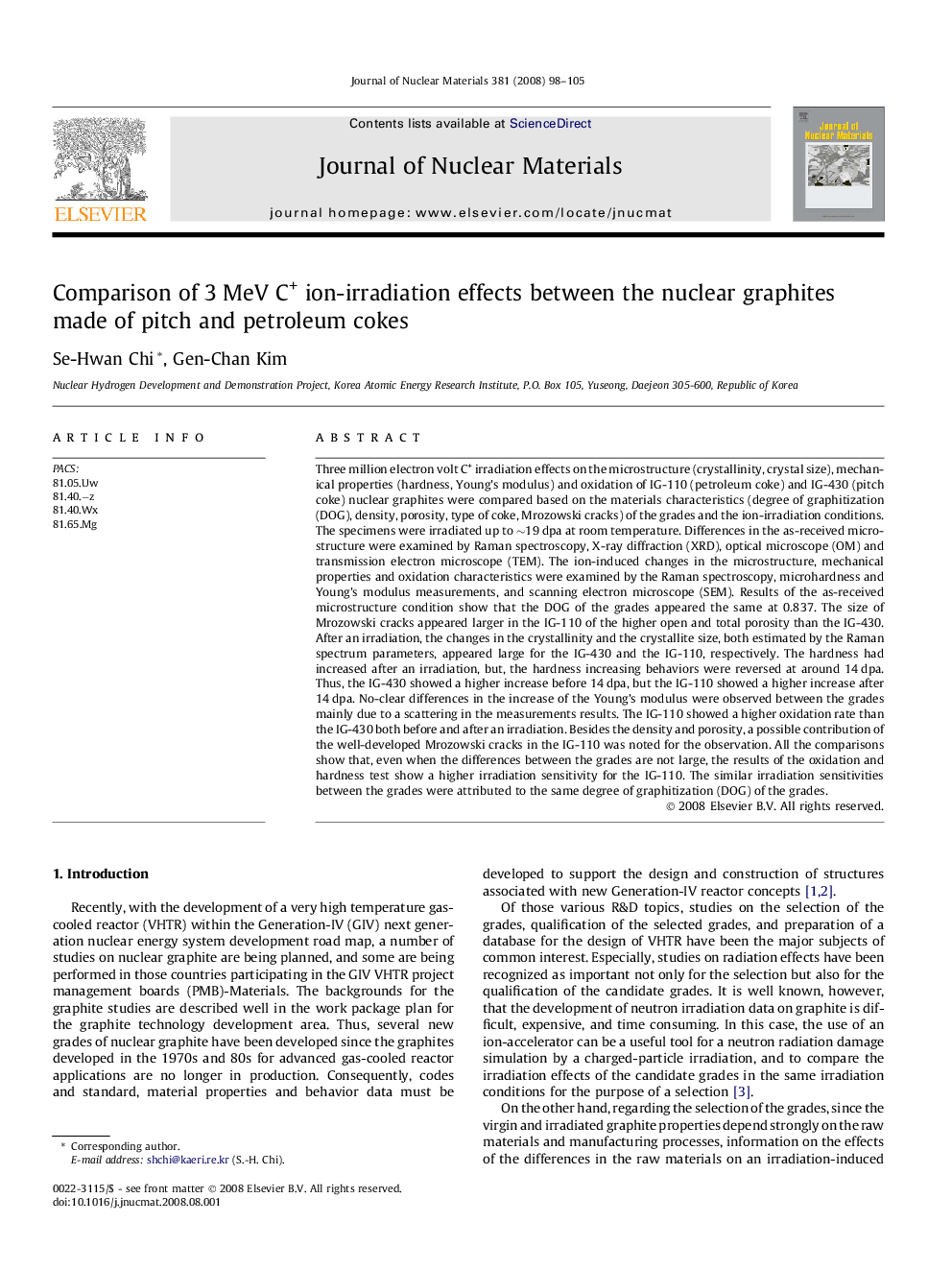| Article ID | Journal | Published Year | Pages | File Type |
|---|---|---|---|---|
| 1568322 | Journal of Nuclear Materials | 2008 | 8 Pages |
Three million electron volt C+ irradiation effects on the microstructure (crystallinity, crystal size), mechanical properties (hardness, Young’s modulus) and oxidation of IG-110 (petroleum coke) and IG-430 (pitch coke) nuclear graphites were compared based on the materials characteristics (degree of graphitization (DOG), density, porosity, type of coke, Mrozowski cracks) of the grades and the ion-irradiation conditions. The specimens were irradiated up to ∼19 dpa at room temperature. Differences in the as-received microstructure were examined by Raman spectroscopy, X-ray diffraction (XRD), optical microscope (OM) and transmission electron microscope (TEM). The ion-induced changes in the microstructure, mechanical properties and oxidation characteristics were examined by the Raman spectroscopy, microhardness and Young’s modulus measurements, and scanning electron microscope (SEM). Results of the as-received microstructure condition show that the DOG of the grades appeared the same at 0.837. The size of Mrozowski cracks appeared larger in the IG-110 of the higher open and total porosity than the IG-430. After an irradiation, the changes in the crystallinity and the crystallite size, both estimated by the Raman spectrum parameters, appeared large for the IG-430 and the IG-110, respectively. The hardness had increased after an irradiation, but, the hardness increasing behaviors were reversed at around 14 dpa. Thus, the IG-430 showed a higher increase before 14 dpa, but the IG-110 showed a higher increase after 14 dpa. No-clear differences in the increase of the Young’s modulus were observed between the grades mainly due to a scattering in the measurements results. The IG-110 showed a higher oxidation rate than the IG-430 both before and after an irradiation. Besides the density and porosity, a possible contribution of the well-developed Mrozowski cracks in the IG-110 was noted for the observation. All the comparisons show that, even when the differences between the grades are not large, the results of the oxidation and hardness test show a higher irradiation sensitivity for the IG-110. The similar irradiation sensitivities between the grades were attributed to the same degree of graphitization (DOG) of the grades.
